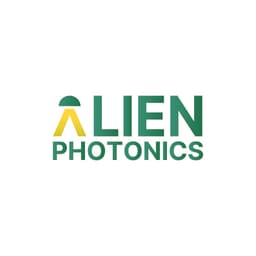


Ti:Sapphire Laser Line HR Mirrors
Ti:Sapphire (Ti:Sapph, Ti:Sa, Ti:SR, Ti:AlO3) Laser Line Mirrors are designed for Titanium doped Sapphire laser beam steering and laser cavity. 800, 400 and 267 nm wavelengths and custom-tuned wavelengths are available.
Estimated Shipping Date: May 15, 2025 - May 29, 2025
* - Shopping cart pricing is based on the most recent pricing and it is NOT ORDERING, but requesting an official quotation which should typically reach You within 1-2 business days.
- Variants
- Description
- Applications
- Characteristics
Ti:Sapphire Laser Line (HR) Mirrors - purpose, key functions, production and customization
What is Ti:Sapphire Laser Line (HR) Mirror?
Ti:Sapphire laser line (HR) mirrors are optical components coated with high reflection dielectric coating. These mirrors reflect single wavelength, e.g. fundamental Ti:Sapphire laser line wavelength (or harmonics) at the designed angle of incidence (AOI). Two different Ti:Sapphire HR mirrors can sometimes be replaced with single Ti:Sapphire double band DBHR mirror, which reflects both wavelengths.
How to make Ti:Sapphire Laser Line (HR) Mirrors?
Similarly to Nd:YAG and Yb:YAG laser line mirrors, the process begins with polishing of mirror substrates and coating them with high reflection optical thin film. Unlike output couplers(partial reflectors), HR coating is designed for for maximal possible reflection. After production, Ti:Sapphire HR mirrors are inspected and stocked or shipped to the customer.
How to handle and clean Ti:Sapphire Laser Line (HR) Mirrors?
Ti:Sapphire laser line (HR) mirrors are coated with dielectric coating, which is generally more resistant than metallic mirrors (Au, Ag, Al). We recommend to follow regular cleaning and handling instructions for dielectric coated optics.
Custom Ti:Sapphire Laser Line (HR) Mirrors
As Ti:Sapphire lasers are often tunable, Alien Photonics offers custom HR mirrors for specific tuned wavelength. Also, we suggest to check out dielectric broad-band DBHR mirrors, which can be more universal solution. Angle of incidence (AOI and laser induced damage threshold can be customized as well. Reflection can be optimized for polarization (e.g. S-pol or P-pol), which can be beneficial in advanced optical systems with High Energy PBS cubes and True-Zero Order waveplates.
Ti:Sapphire Laser Line (HR) Mirrors for microscopy, OCT, laser cavity and other applications
Ti:Sapphire laser cavity mirrors
This high reflection (HR) mirror act as a laser cavity (back) mirror of Ti:Sapphire laser to help maintain laser beam quality and beam direction. When it is done correctly, intended Ti:Sapphire laser wavelength is amplified and sustained within the cavity. Once harmonic generation is achieved, after dichroic mirror, 800, 400 and 267 nm laser line mirrors can be used to direct the beams separate ways further away.
Ti:Sapphire Laser Line (HR) OCT mirrors
In OCT (Optical Coherence Tomography) systems (especially biological, biomedical and medical imaging) Alien Photonics Ti:Sapphire Laser Line (HR) Mirrors efficiently direct and wusing lenses focus Ti:Sapphire laser beam, resulting in high-resolution images of biological tissues.
Ti:Sapphire HR microscopy mirrors
Laser-based microscopy setups employ lenses and polarizers together with these mirrors to direct and focus Ti:Sapphire laser beam precisely onto the sample to ensure highest resolution image.
Typical characteristics of Alien Photonics Ti:Sapphire Laser Line (HR) Mirrors
Due to constant improvements, all parameters are subject to change. Please, treat contents of this table as guidelines.
| Characteristics | Typical Value |
|---|---|
| Substrate Characteristics | Value |
| Substrate material | UVFS |
| Diameter tolerance | +0.0 / -0.15 mm |
| Thickness tolerance | ±0.1 mm |
| Protective chamfers (bevels) | 0.25 mm x 45° |
| Flatness | λ/8 @ 632.8 nm (per C.A.) |
| Surface quality | 20-10 S-D (acc. to MIL-PRF-13830B) |
| Coating Characteristics | Value |
| Clear Aperture (C.A.) | >85% |
| Group Delay Dispersion (GDD) | optimized |
| Laser Induced Damage Threshold (LIDT) | >5-15 J/cm² @ 1064 nm, 10 ns, 10 Hz |
| Certificate | Availability |
| Certificate of Conformance (COC) | Yes. Available upon request. |
| RoHS | Yes. Available upon request. |
| Conflict minerals | Yes. Available upon request. |